Sensory bins are great – we love them here! And I’m passionate about making hands-on learning simple and accessible. But why is sensory play important?
Why sensory play?
Sensory play has so many benefits for developing minds! Sensory bins can be a really great way for kids to self-regulate. It’s great for grown-ups too! Give it a try and you’ll see what I mean. Because of it’s calming effect, kids seem to get along better during sensory time, which in turn helps them develop cooperation and communication skills.
Sensory play also helps kids to focus on and develop awareness of their senses. Not only that, it also aids in the development of fine motor skills and can be incorporated into math, literacy, science, and more. Sensory play can keep kids curious engaged for quite a while, and the possibilities are endless!
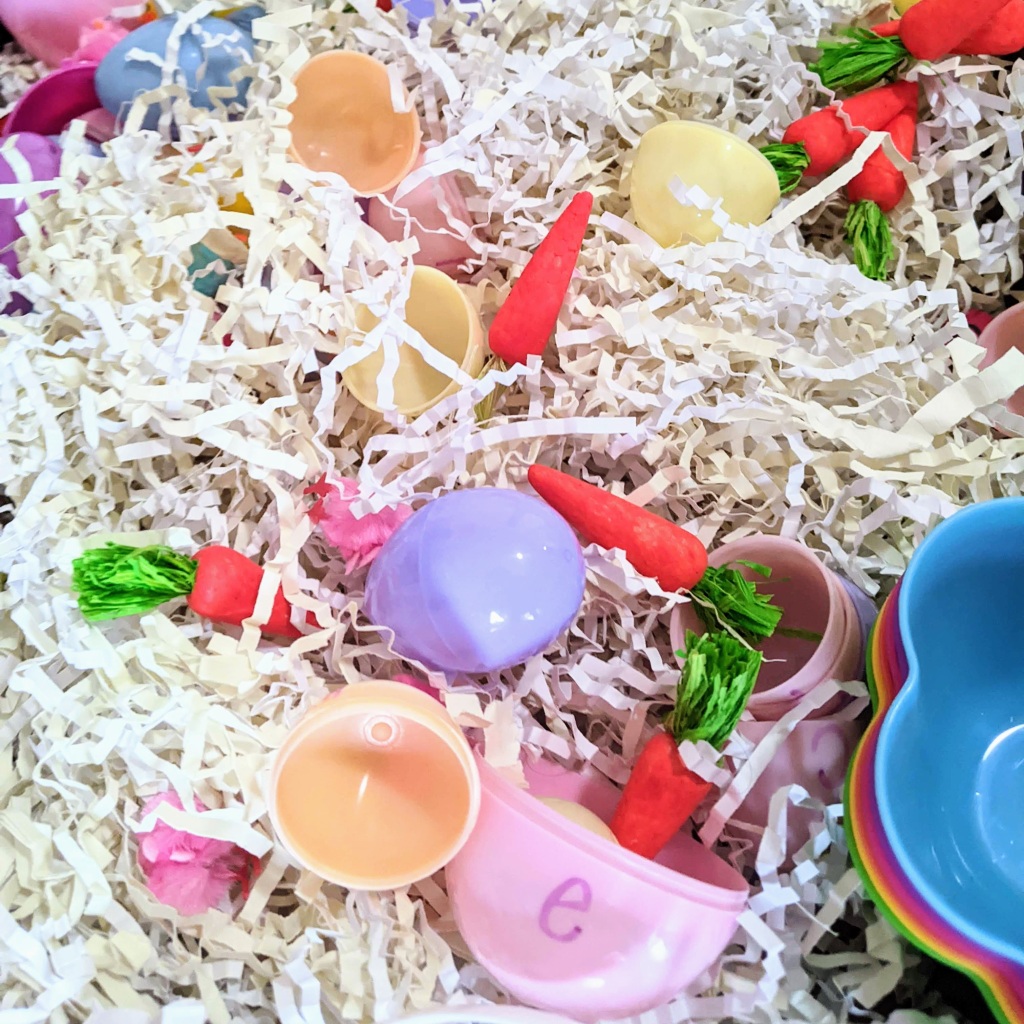
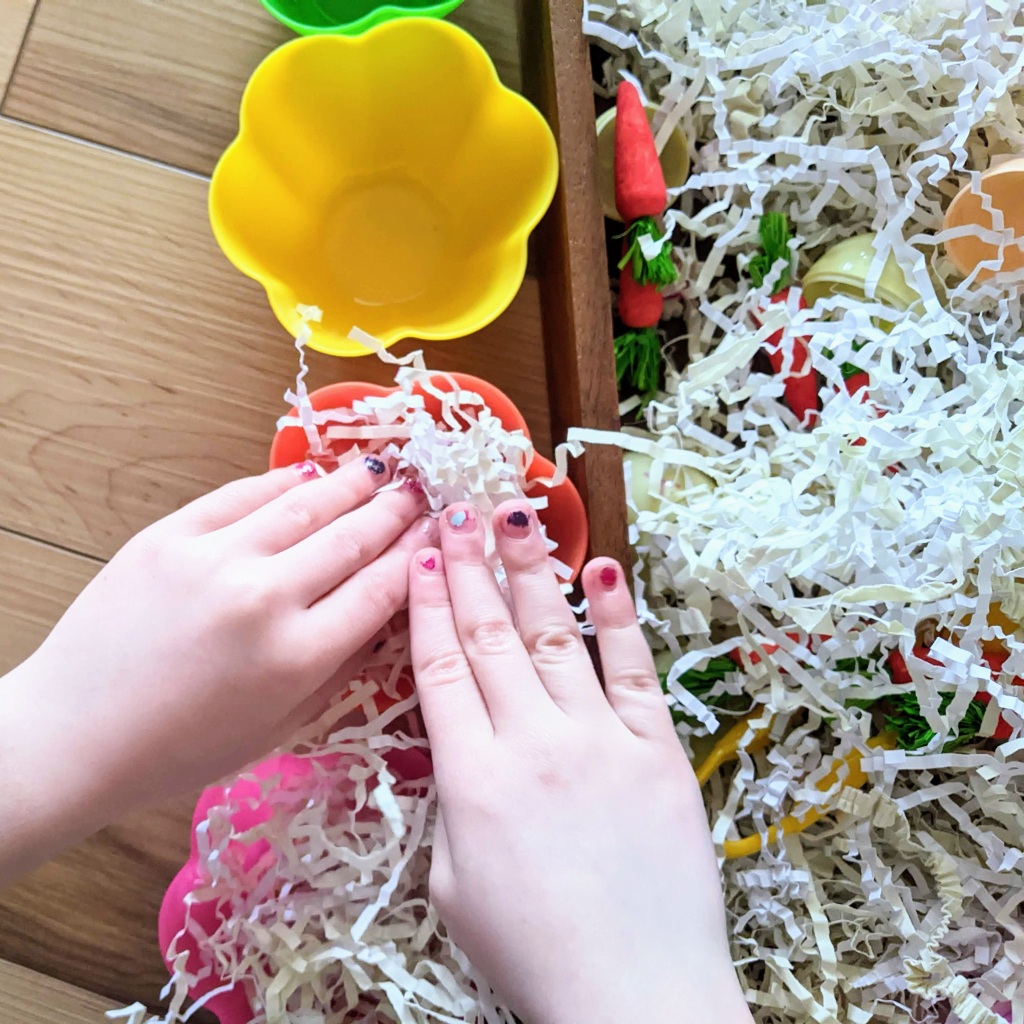
In the bin above we used paper Easter basket filler – a favorite texture!
So here’s how to make a basic not-so-Pinterest-perfect sensory bin!
First you need a base – rice, beans, and other grains are perfect for this. Depending on the activity, you can dye them or leave them plain. For example, in our outer space sensory bin, we left the black beans plain. But for our Valentine’s Day bin, we colored our rice red and pink. To color your grains or beans:
- Put them in a large Ziploc bag and add a few drops of food gel. (Food coloring works too, but gel coloring comes out less splotchy.)
- Next add enough rubbing alcohol to evenly coat the grains. (A lot of people use white vinegar for this, but I find that rubbing alcohol is more effective, the smell doesn’t linger, and they dry faster.)
- Now mix the grains together in the bag until they are evenly coated.
- Lay your grains out on a baking tray to dry.
Now that your grains are ready, add them to your bin or tray. You can stop here if you want! If you don’t have fine motor tools, kitchen tools work just as well.
You can see our Valentine’s bin here: I used rice for my base, then added some beads, and finally – my favorite – mini erasers. We use them all the time for math!
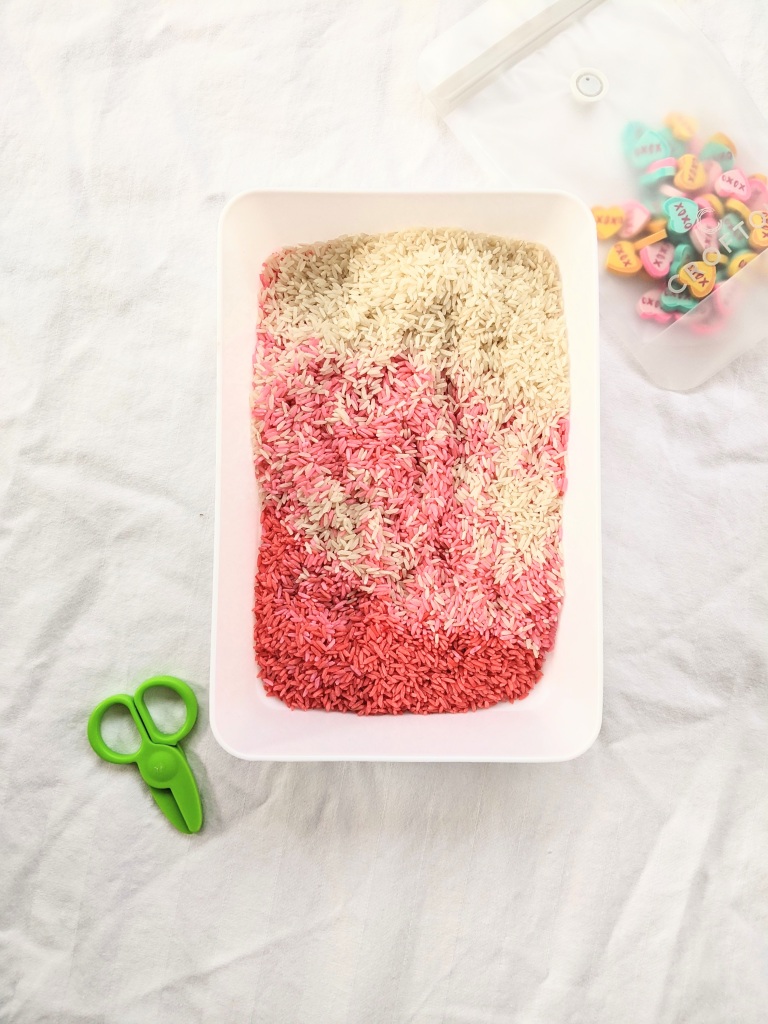

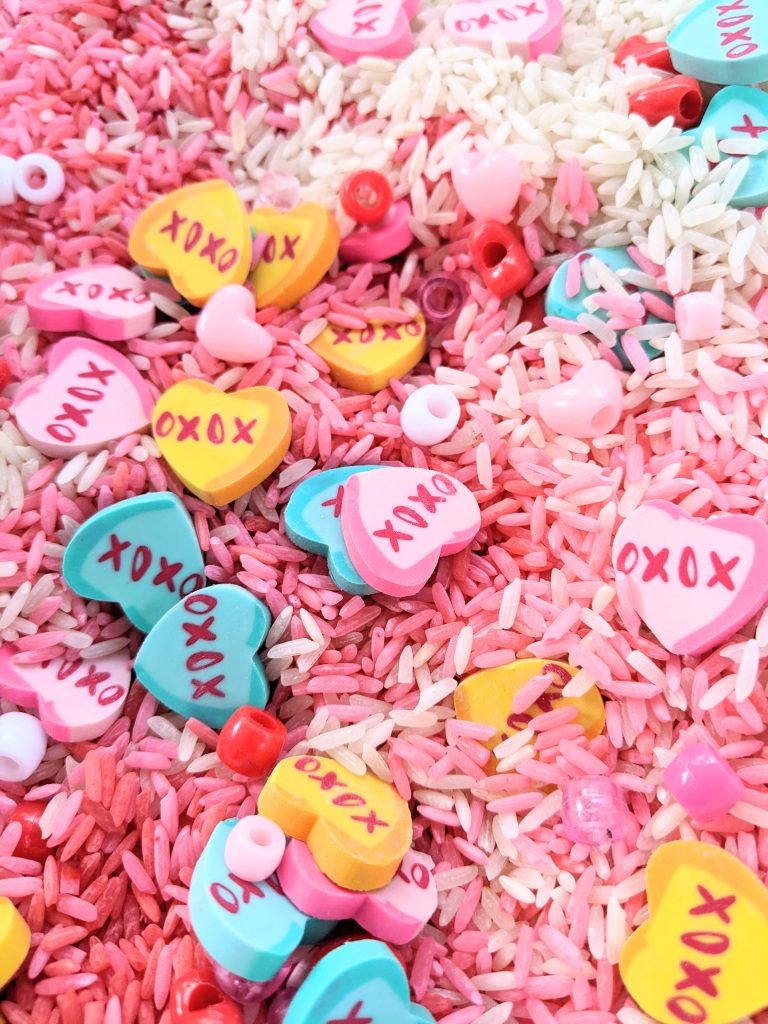
Again, I’m all about simple and easy – use what you have at home or in your classroom! The fall bin below is just white beans and some charms from the craft store. Our St. Patrick’s Day bin is filled with split green peas and toy coins that we already had. And we made the planets in our outer space bin ourselves using Play-doh – which was a fun side activity.
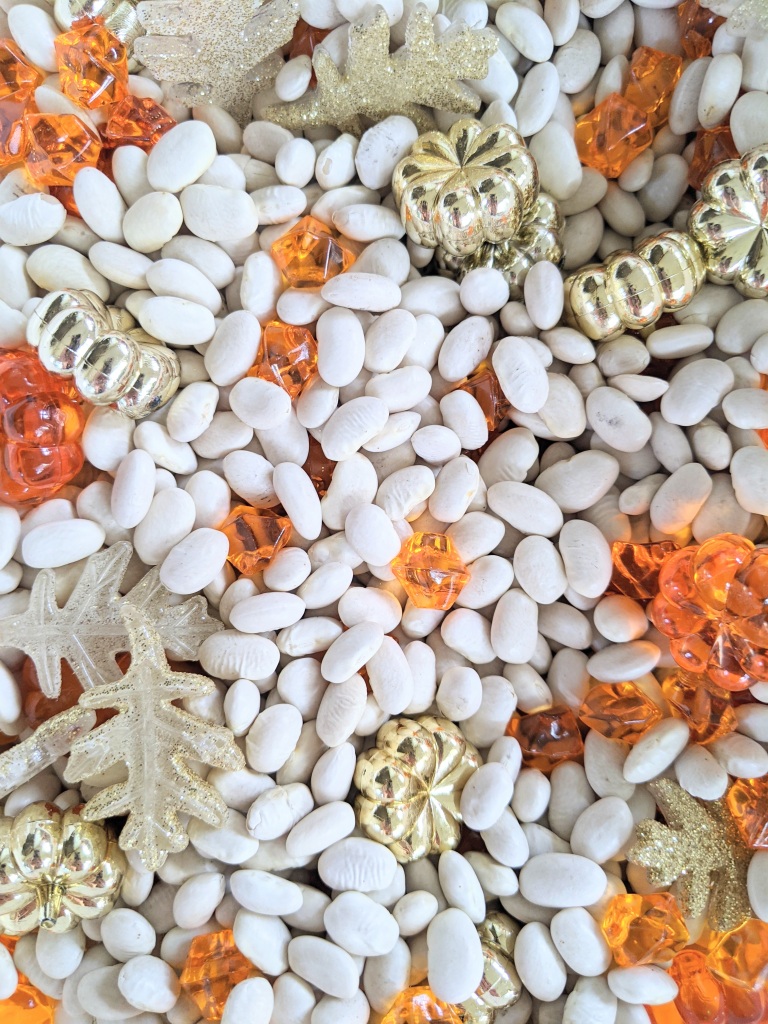
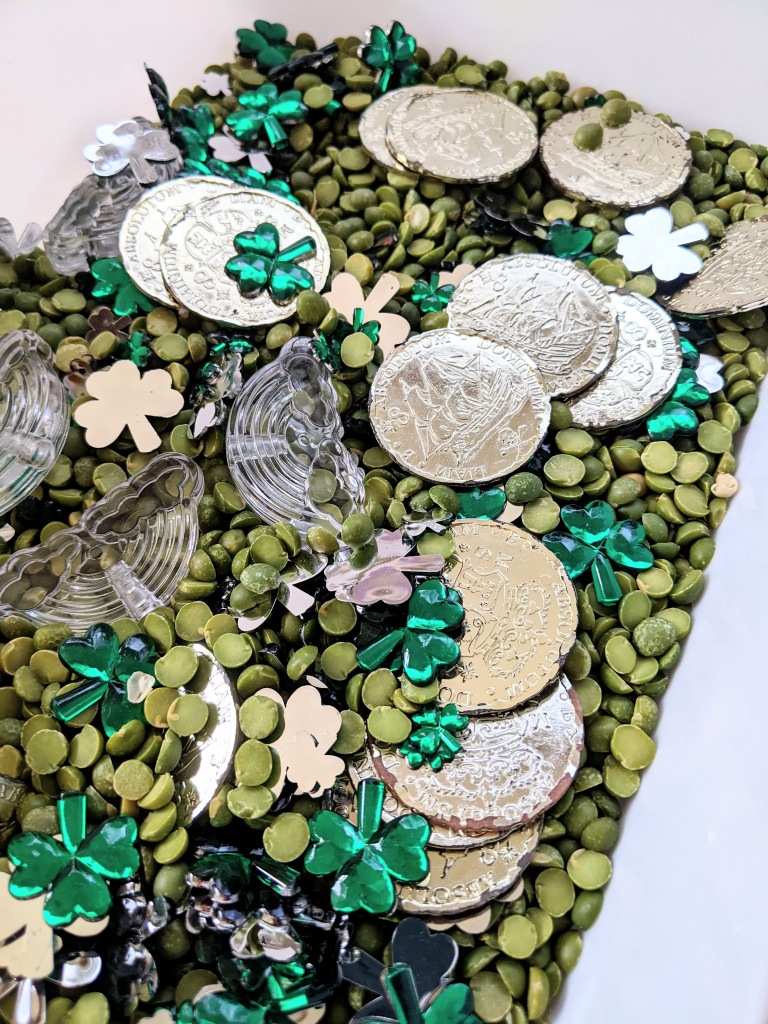
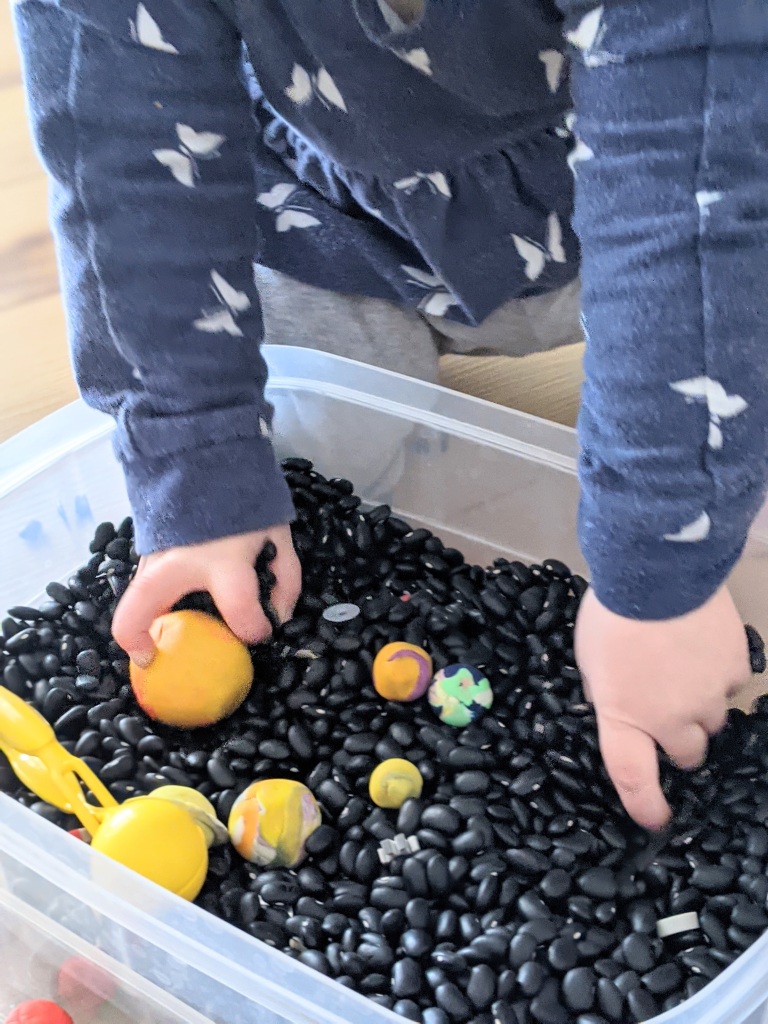
Sensory meets pretend play
Another way we like to play is to combine sensory and pretend play. Below is an activity we did for our trip to Venice. This one is so quick! Cut up some yellow yarn for noodles, then throw in brown or red jumbo pom poms for meatballs. Now your learners can play chef while also enjoying a sensory experience!
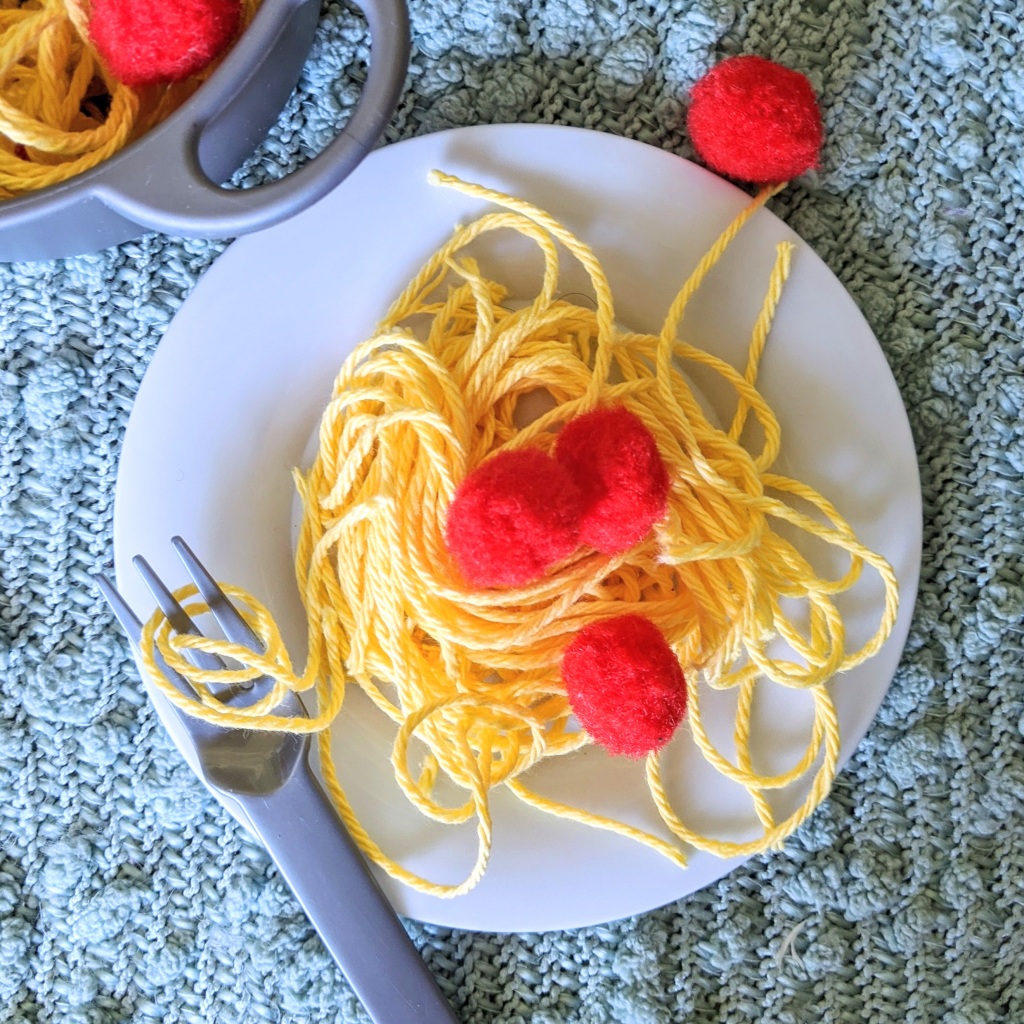

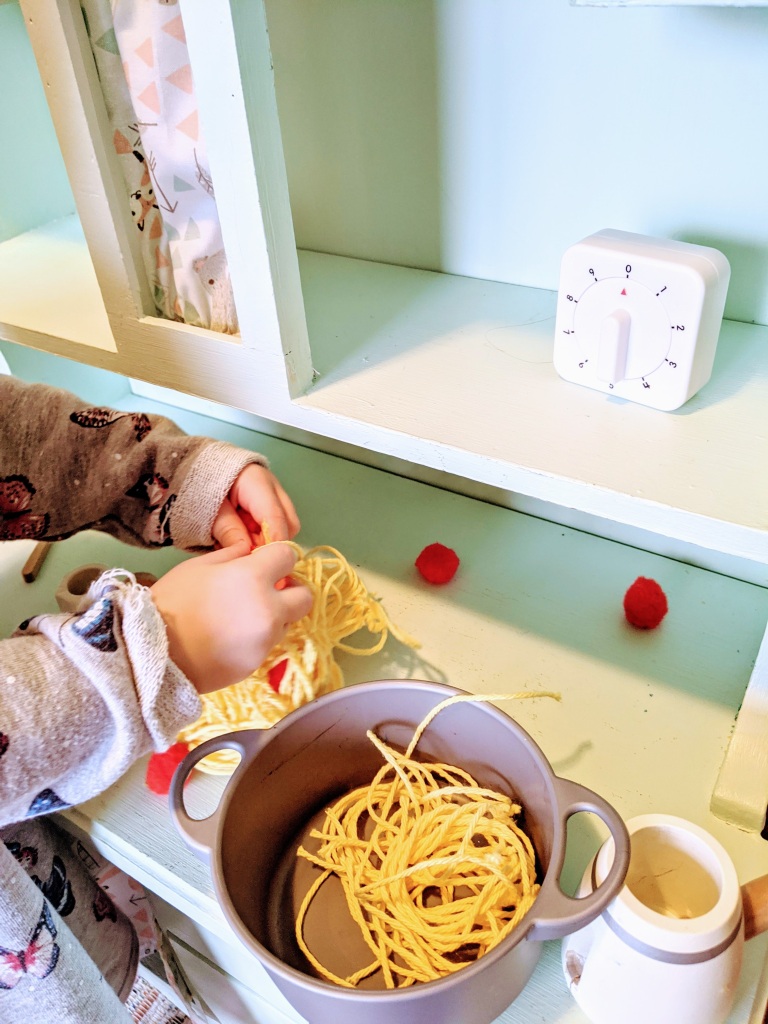
Edible sensory
This is probably the easiest sensory play! We have to eat after all… Pour cereal into a tray and sort it. Below we used chocolate lucky charms. When you’re done – it’s snack time!
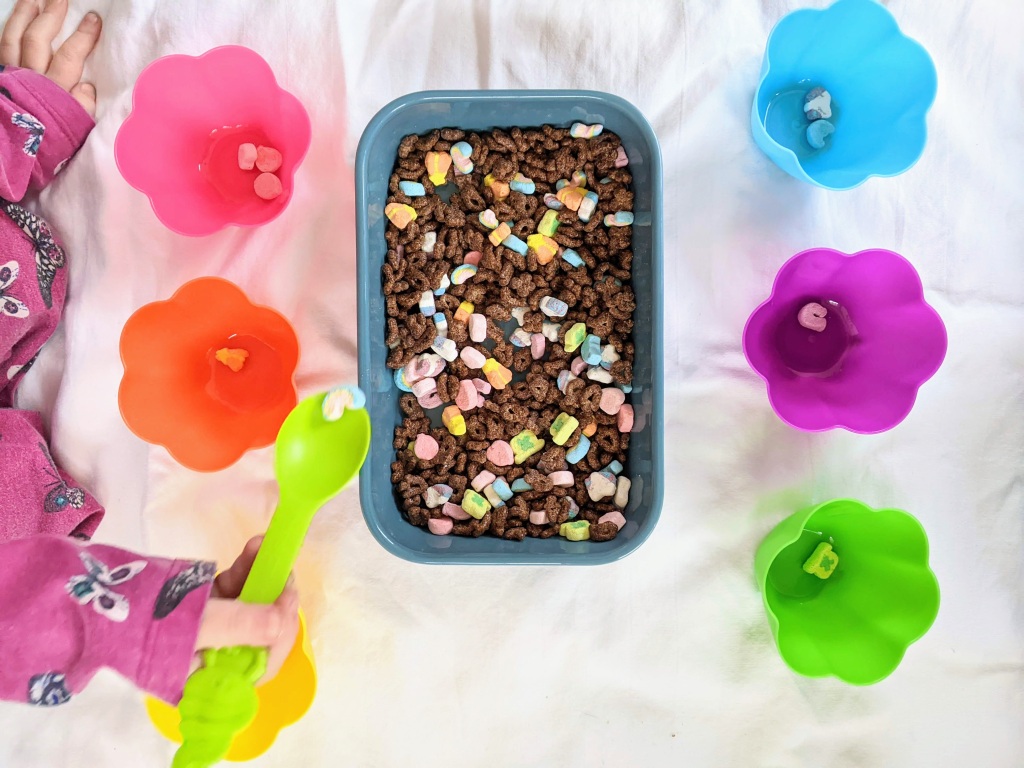

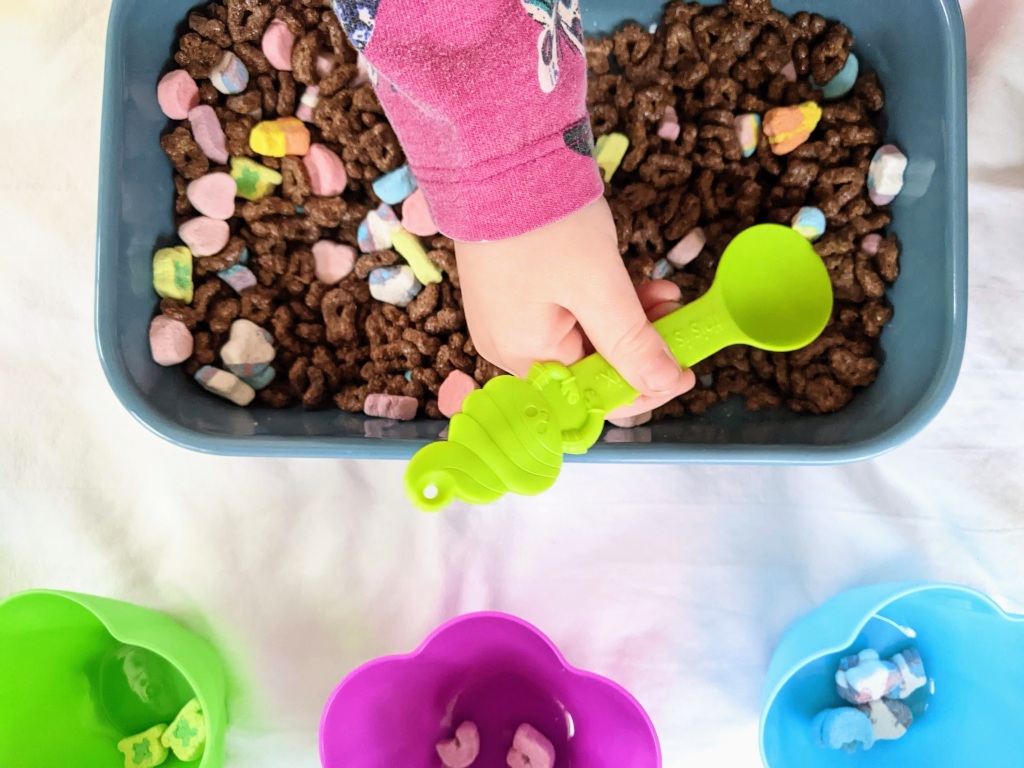
Add a story element
Adding a story into your sensory play can keep your learners engaged for even longer! One of my favorites is our Christmas sensory bin inspired by “How Do Dinosaurs Say Merry Christmas?” by Jane Yolen and Mark Teague. After reading the story we made our bin using cloud dough. To make cloud dough all you need to do is add 2 parts cornstarch to 1 part conditioner. But if you’re not into the sticky mess, that’s okay! Fake snow, cotton balls, or any other fluffy filler will do. To our cloud dough we added candy canes, trees, stars, and of course, our dinos!
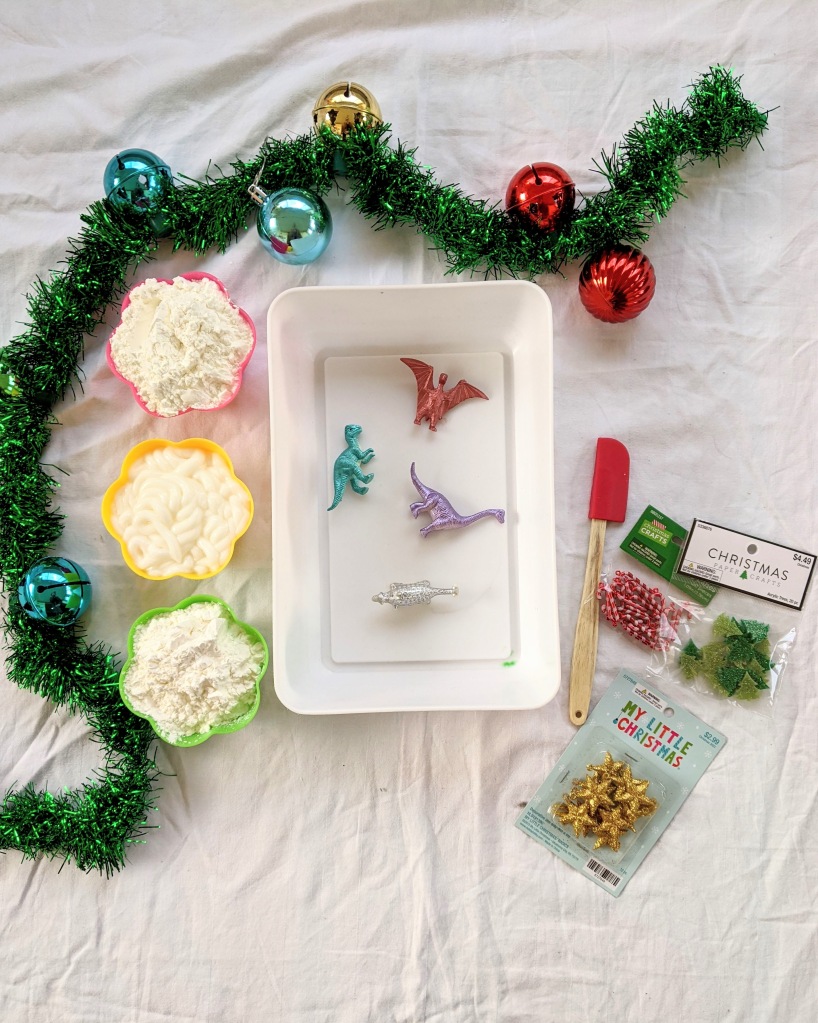
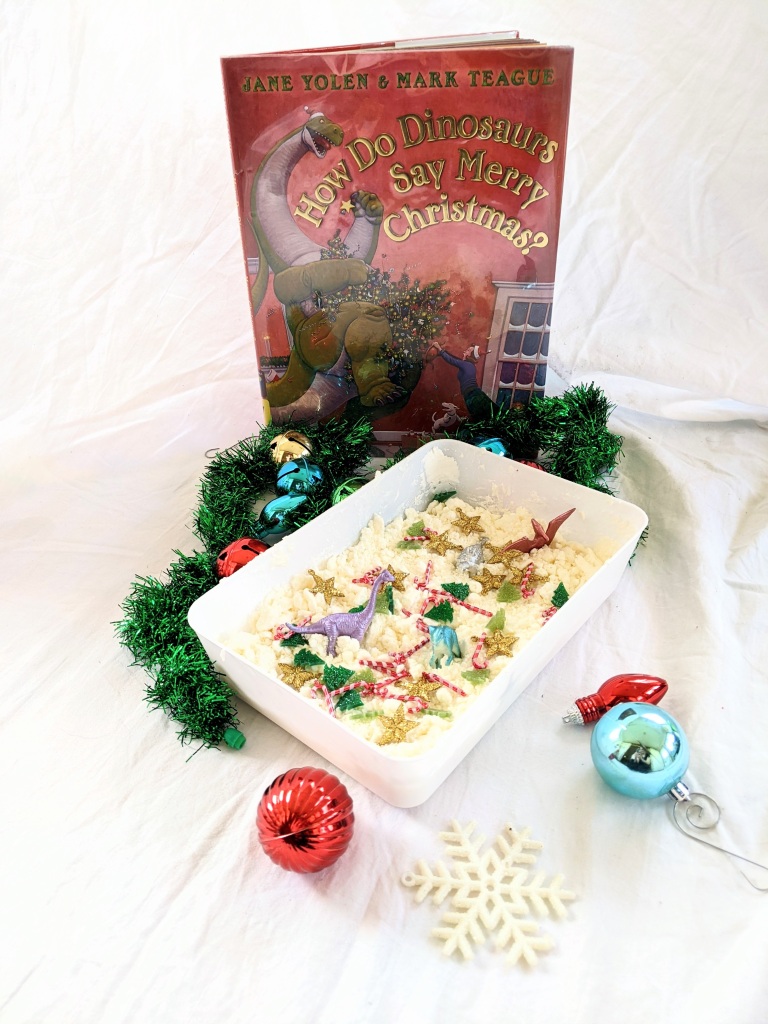

Have you found any sensory bin inspiration today? I’d love to hear from you! You can send me an email or message me on social media.
Happy teaching!
-Sarah

